making a mess (part 1)
where we cut paper and then glue it to something
I’m writing about collage today. I’ve been happily neck-deep in scraps of old magazines, newspapers, found ephemera and glue since I returned from France. However, today I’m at the house, awaiting some deliveries1, when I’d much rather be at the studio getting my hands dirty. So, since I can’t actually work with paper and paint and glue right now, I thought I might write about it. I think it will be two parts. Might end up being three.
As an illustrator, if I’m known for anything, it’s for the highly detailed, thick, chonky lines that I draw. I love to draw, and I love drawing a line. I can stare at a drawing by Ben Shahn, or Edward Gorey, or Sendak, or any number of other illustrators all day long, looking at the lines that they made, and wonder about their brushes, the pens, and inks. I got into illustration from drawing, and I believed most of my life that I just don’t think in shapes, or in color, at least not the way a painter does. When I have had to paint something, I have never felt confident. It seemed so complicated. This color butting right up against that color, with no line to separate them. I’m thinking about the covers for the four issues of my graphic novel, Dear Julia, as I write this. The drawings for this story were drawn with pen and ink, but the covers were painted, with gouache, and bits and pieces of collage at times. These covers were painted in the mid 1990s, before I started using Photoshop for my work, and I’m now sort of surprised that they turned out okay.
I discovered collage, beyond childhood summer art camp anyway, during a summer design class at Parsons in 1985. The first week of class, our instructor, John Bellacosa, took us to a Kurt Schwitters show at MoMA. I was a 17-year-old from the suburbs of Houston that could draw, but didn’t really know much about anything, and I think John knew exactly what the answer would be when he asked me what I thought of Schwitters. I wasn’t enlightened in 1985, but I wasn’t dumb either, and I was curious. I knew that if this piece of cardboard covered in bits of torn scraps of paper was sitting here in this museum, there was probably a reason why.
It wasn’t long after Schwitters that I found Joseph Cornell’s boxes, which I couldn’t get enough of. The combination of these two artist’s work had little visible effect on anything I was making at the time2, but it deeply affected me in other ways. It made me aware of this huge potential visual direction that I had no idea how to use. It led me to flea markets in Paris and New York and even Dallas where I began collecting old postcards and photographs. As the work I did in school and for a living became digital, I reacted by forming a nostalgia for a past I never lived in, and memories that weren’t my own.
The 1990s and 2000s were spent diving into the deep-end of digital tools. I was a San Francisco designer, and then an illustrator and sometimes-animator, and I was fascinated with the possibilities of Photoshop, Illustrator, and After Effects. Moreover, I was feeding a new family and digital tools were quicker, more predictable, and more flexible. My graphic novels, like the aforementioned Dear Julia, were created traditionally, but once that book was completed in 1997, it was a decade before I picked up actual art supplies again.
The art supplies I picked up first were just black and white acrylic paint on cardboard. This began around 2006-2007 when I started creating robots by first painting simple black fields, which was the positive space, and then, something like a printmaker and not unlike cutting shapes with scissors, “carving out” the negative space with white. This process forced me to give up almost any idea of line, and instead focus shape and form. This was completely new to me.
It wasn’t long before I wondered what else I might do with that positive space. I started thinking about dials and hardware and subtle color variations. I can’t recall if there were artists I was following who worked in collage. I know I loved the work of Sara Fanelli, and Lane Smith’s digital collages aren’t completely dissimilar. But in retrospect it seems like a weird leap for me when, in 2009, I made my first proper collages,3 these race cars. I just cut the paper from whatever magazines I had on hand, and glued it into a big rectangle with a Uhu stick into a sketchbook. The shape of the car itself, like the robots’ negative space, was painted with acrylic.
Race cars and robots were the perfect place to begin this journey, as they happily invite what makes collage fun for me. Plenty of opportunity for textures and printed letterforms and colors. Clocks from old catalogs for robot dials, and logos for race car details.
These two race cars were practice collages. I didn’t know anything about glue or acrylic paint in 2009, but I bought some Mod-Podge and white gesso at the art supply store, and some cuts of square plywood at the hardware store. Over the next three weeks I made six race cars, each with a bit more sophistication and different ideas than the previous one.
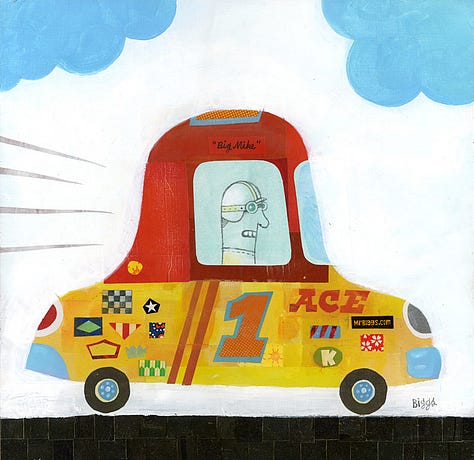
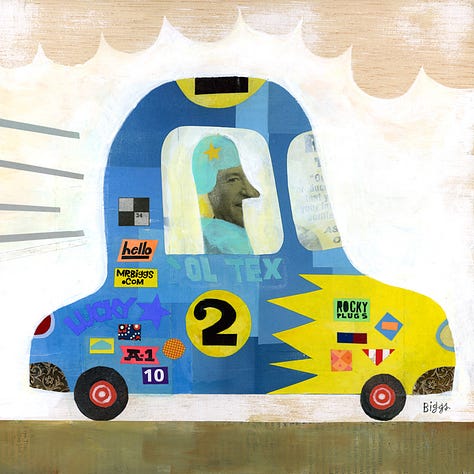
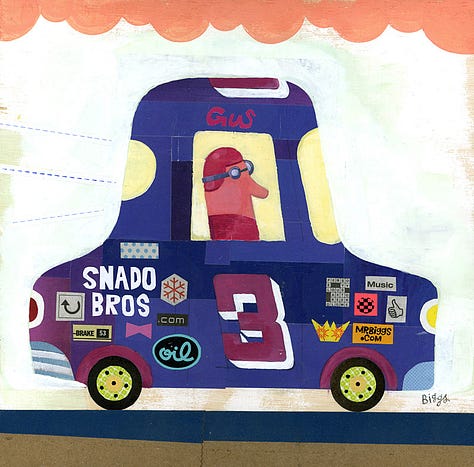
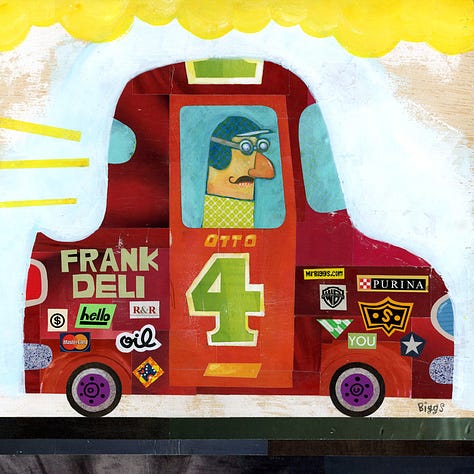
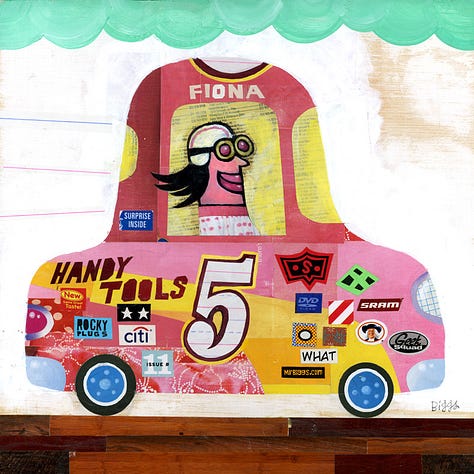
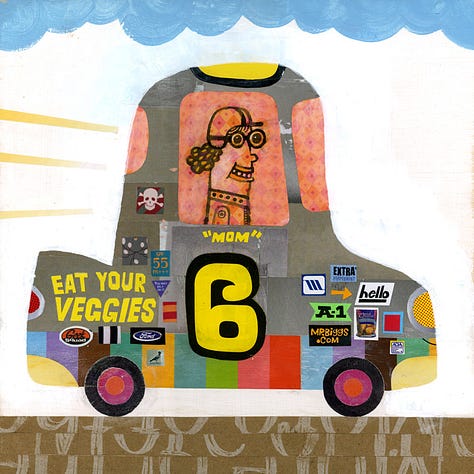
That three weeks in September 2009 of making these cars, of painting and making mistakes and gluing and making more mistakes and learning so much, was the most fun, the most exciting, the most visceral experience I’d had making art in nearly twenty years.

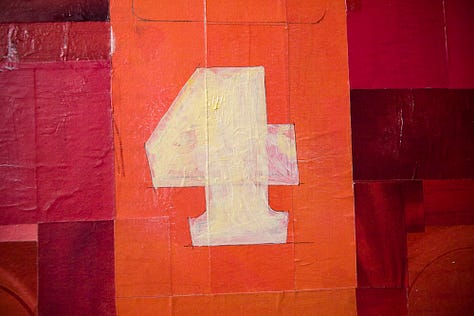
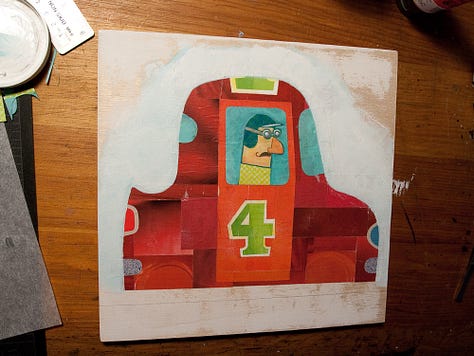
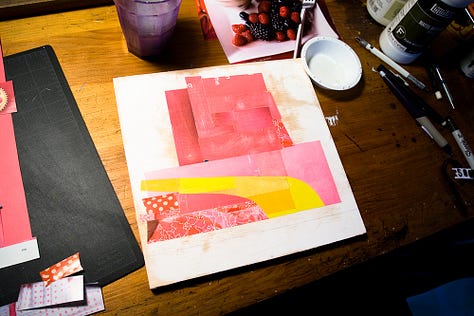
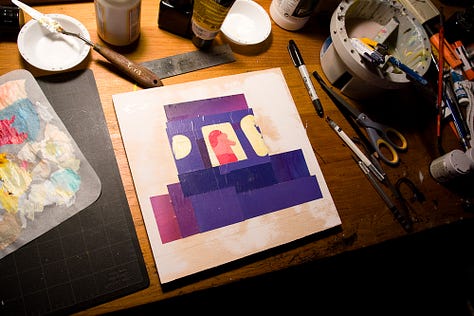

I showed the race cars at a group show in New Jersey, I sold two of the collages, I thought of other things I might make. I started collecting old ephemera and magazines, I had plans.
And then I didn’t make another collage for ten years.
I know, right? Ten years? 2019? What happened? Well, a career happened. In October 2009, I started working on Everything Goes, and if you know those books, you’ll understand. From Everything Goes came Frank Einstein, then Tinyville Town, all of these very complicated series each containing several books. Raising teenagers happened. Bicycling happened. I just couldn’t make space on the desk for the mess or time in the day that collage insists upon. I was in the studio ten hours a day doing work that had deadlines. Drawing pictures became somewhat tedious work, most of the time. Collage wasn’t going to pay the bills, so I put aside the idea of it, and I carefully shelved that visceral exciting feeling that collage brought me, and went back to work.
I knew I’d get back to it sooner or later.
Next week: sooner or later becomes right now!
PLUS: how I go about this process.
Someone asked for cat pictures. Here is Basil, at least.
Eating my art supplies. Note Maple in the background.
A new oven/range, and a table to hold the pizza oven out in the back yard. Large items, and someone has to be here to sign the paperwork.
I was obsessed with drawing, as an illustrator, and the emerging technologies of desktop publishing as a designer. I just didn’t know where to put these piles of pieces of paper.
I knew they were “practice” versions when I made them, but still, they’re the real deal.



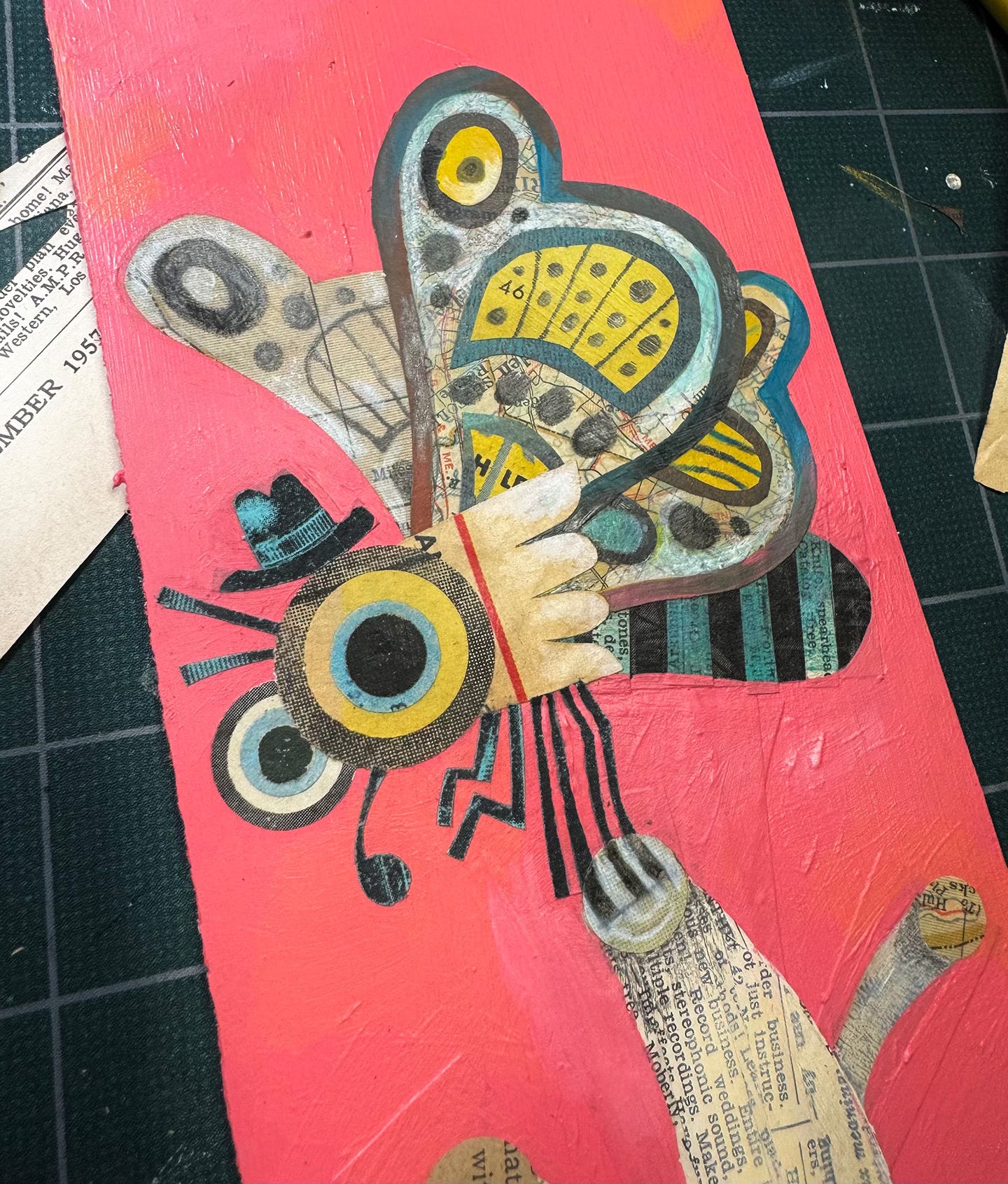
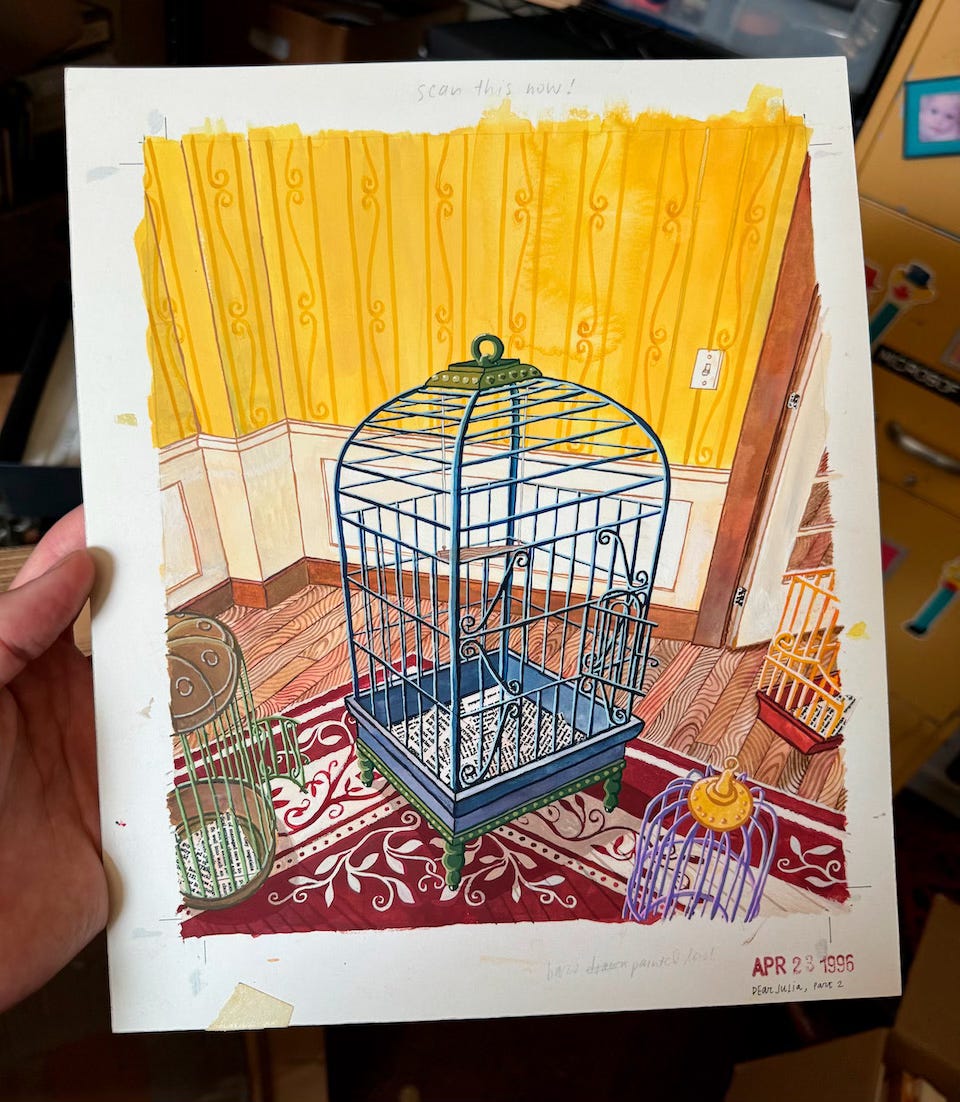
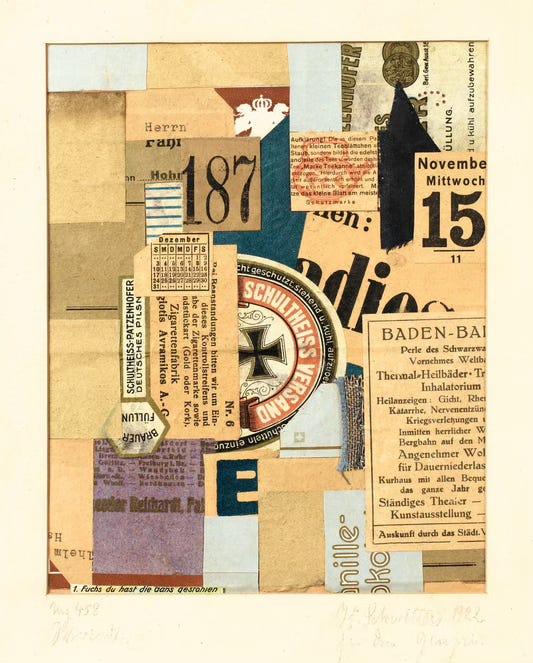
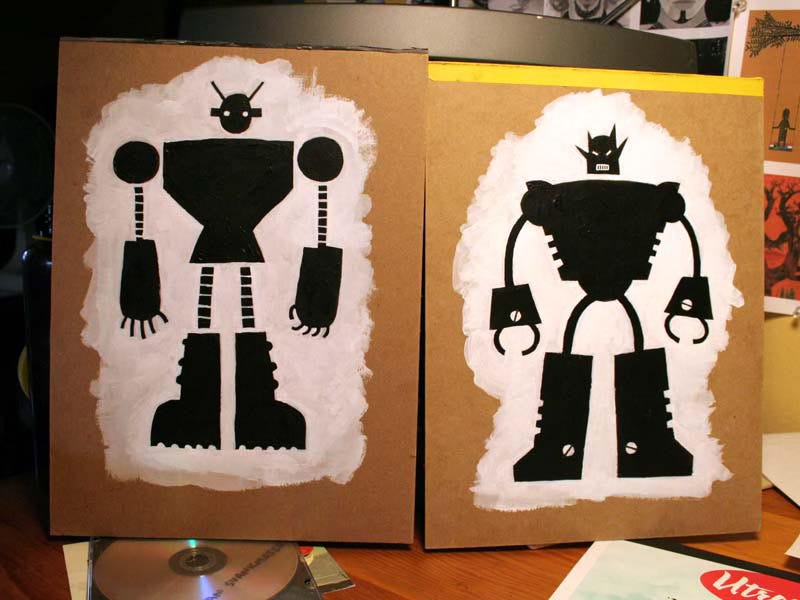
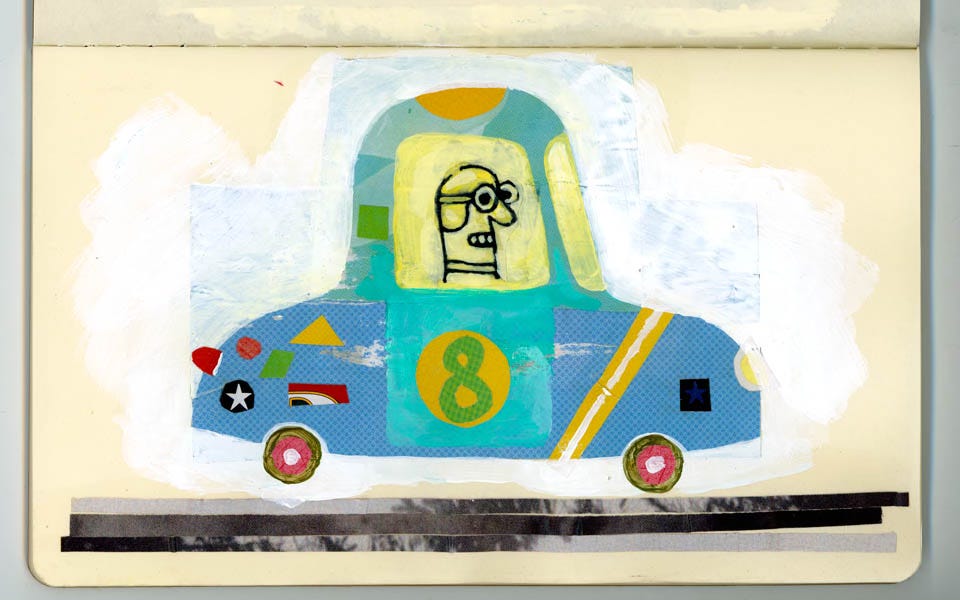
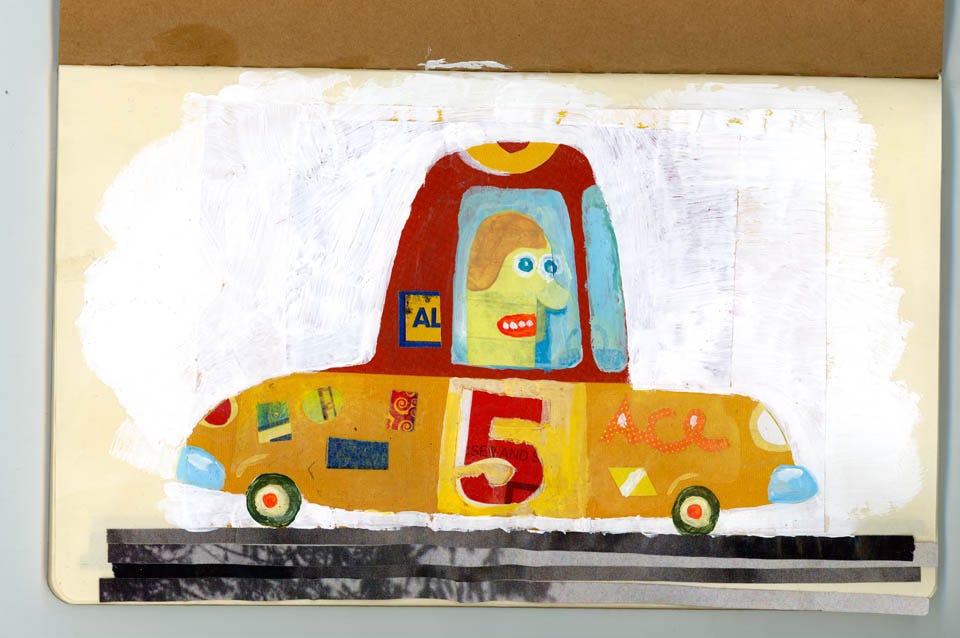


Just discovered your Substack through Substack Reads "Your Weekly Stack". LOVE!
I am also a fan of collage and look forward to catching up on your collage and other posts!
I started collecting collage materials when we moved back to MN 10 years ago. I had an idea to start a regular group called "Collage Reunion". But like you, life happened, and books didn't get steady enough, and then I got a dayjob, and now here I am with two big bins of materials, scissors, glue, and x-actos, and a cool name for a group, and maybe life is calming down a bit. Maybe it's time?